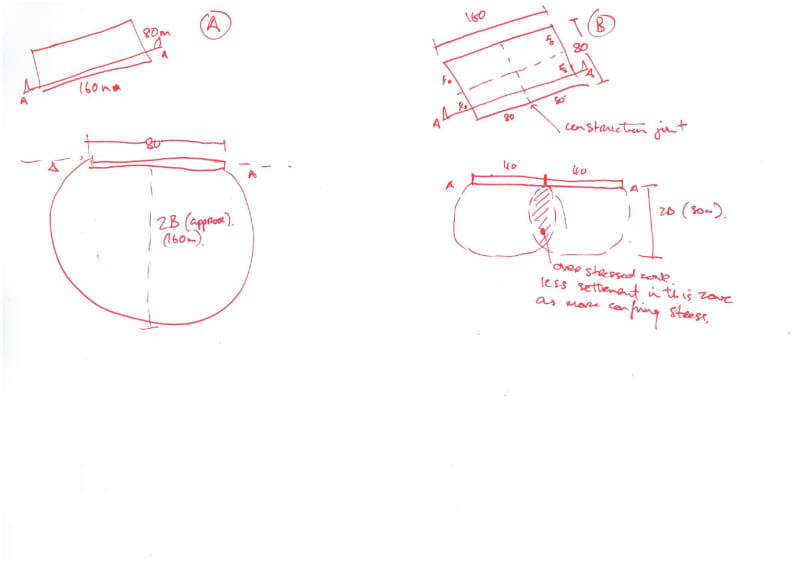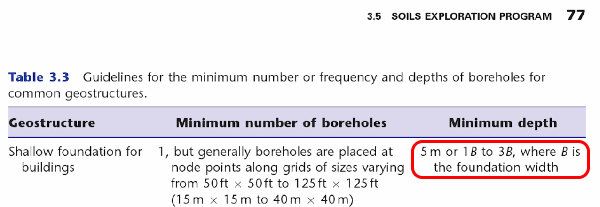We have a large raft 160 x 80m. We have a borehole to 30m only. Medium dense Sand to 9m, clay to 13m medium dense to dense sand / gravel below.
I argued that to do a settlement calculation, you need information to 2B, which is 160m. She argued that if you install construction joints, the slab essentially acts independently. There will be overlapping stress joins and in sand, these areas will have higher stiffness due to increase confinement. I am not sure on that part tbh.
I argued that it is a flexible foundation still and acts as one. For example if you construct a 20m wide embankment x 100m long. You have a ZOI of 40m 2B...it doesnt matter what the surface it is applied to, the soil still feels the load in the same way.
I understand the difference between flexible and rigid foundations, that some loads gets shed to the edges or middle etc. But in this case i think I am right that the ZOI is still 2B
Refer below - I say A is right, shes says B. Let me here your thoughts and evidence to back it up![[pc2] [pc2] [pc2]](/data/assets/smilies/pc2.gif)

I argued that to do a settlement calculation, you need information to 2B, which is 160m. She argued that if you install construction joints, the slab essentially acts independently. There will be overlapping stress joins and in sand, these areas will have higher stiffness due to increase confinement. I am not sure on that part tbh.
I argued that it is a flexible foundation still and acts as one. For example if you construct a 20m wide embankment x 100m long. You have a ZOI of 40m 2B...it doesnt matter what the surface it is applied to, the soil still feels the load in the same way.
I understand the difference between flexible and rigid foundations, that some loads gets shed to the edges or middle etc. But in this case i think I am right that the ZOI is still 2B
Refer below - I say A is right, shes says B. Let me here your thoughts and evidence to back it up
![[pc2] [pc2] [pc2]](/data/assets/smilies/pc2.gif)



![[idea] [idea] [idea]](/data/assets/smilies/idea.gif)